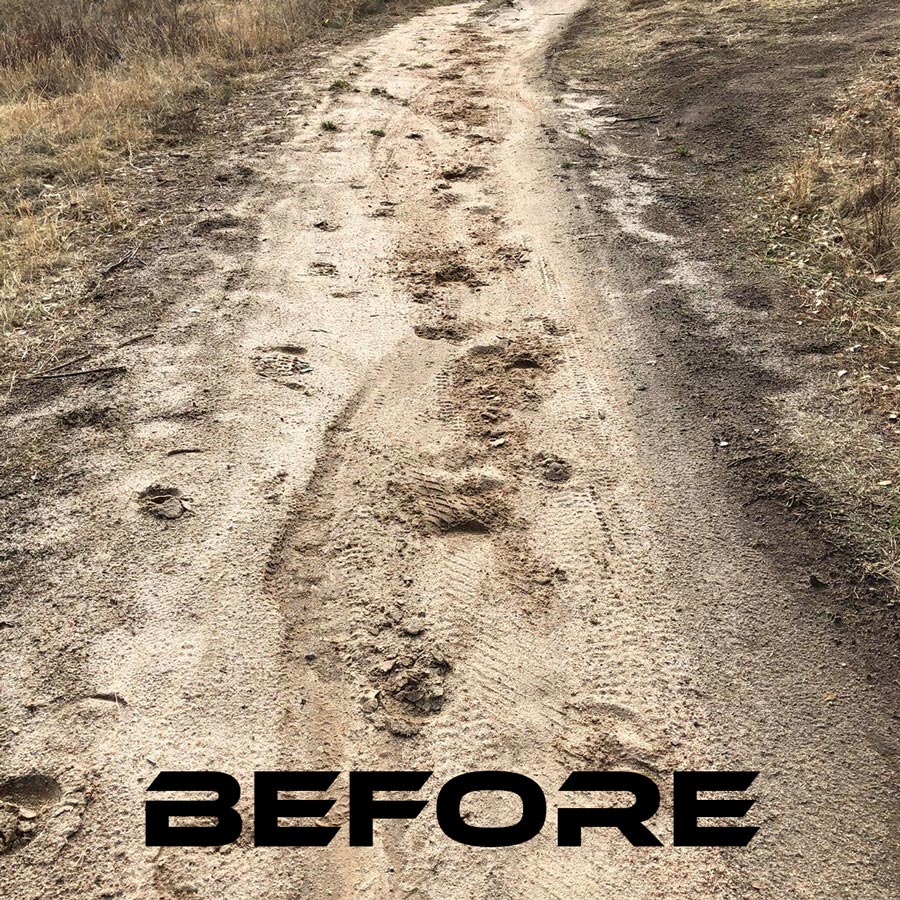Trail Resources
Have you been stopped by an authority figure while riding your Onewheel? Did your favorite trail post a new sign saying Onewheels are not allowed? Use our advocacy resources to help make your case so you can ride freely without fear of tickets, bans, and other penalties.
What to do if you’ve been stopped
So you’ve been stopped for riding your Onewheel—what now?
First of all, don’t panic. It’s unfortunately inevitable for any new activity to face some resistance before achieving widespread adoption; just look at skateboarding and snowboarding. Onewheel is no different! We’re at the cutting edge of a revolutionary new boardsport. It falls on us to pave the way for future riders, and sometimes that means advocating for ourselves. If we do so with smarts and respect, it can only shorten the journey before all Onewheel riders can enjoy mainstream acceptance.
Come to a controlled stop and dismount.
This way, your very first move will be to demonstrate that you are in control and capable of reacting to situations around you.
Remain calm and courteous.
Address the authority figure as “Officer,” “sir,” ma’am,” etc. Ask them to state the issue, and try to understand the nature of the complaint.
If you’re informed that Onewheels are prohibited at this location and you did not see a sign, apologize and ask the officer to show you where this rule was posted. If you did see a sign, you know what you did! Apologize and leave quietly. Keep off those trails for now and use our Trail Advocacy Guide to make your case in a formal avenue.
If you’ve been approached because someone else had a complaint, this is a great opportunity to educate park authorities about the Onewheel! Chances are, this ranger is just doing their job by responding to a complaint and may be open to hearing both sides of the story. Use our Onewheel Fast Facts and other resources below to address any concerns about speed, damage to trails, and other common concerns. Ask if anyone else has complained about you. If you’ve been following our Trail Etiquette best practices, then the answer should be “no!”
Don’t apologize…
…unless you have actually broken a rule or caused a disturbance. Onewheeling is not a crime (in most places) and you have not done anything illegal just by riding. Saying “sorry” leans into the false impression that you were in the wrong. However, if you are responsible for an accident, altercation, or simply riding where you shouldn’t, definitely do apologize and leave the presmises if asked.
Ask for a warning instead of a ticket.
If the person who stopped you has the authority to issue a ticket, ask for a warning instead. Without admitting guilt, inform the ranger or officer that you try to be a safe and courteous trail user and that you would appreciate a warning instead of a ticket.
But, if you are issued a ticket, don’t be afraid to sign it—this is not an admission of guilt. Write down a detailed account of what happened as soon as possible, including date, time, place, weather, conditions, officer’s name and badge number, and any inconsistencies in the officer’s reason for stopping you. You can always appeal the ticket later, and you’ll want this information when you do.
Onewheel Fast Facts
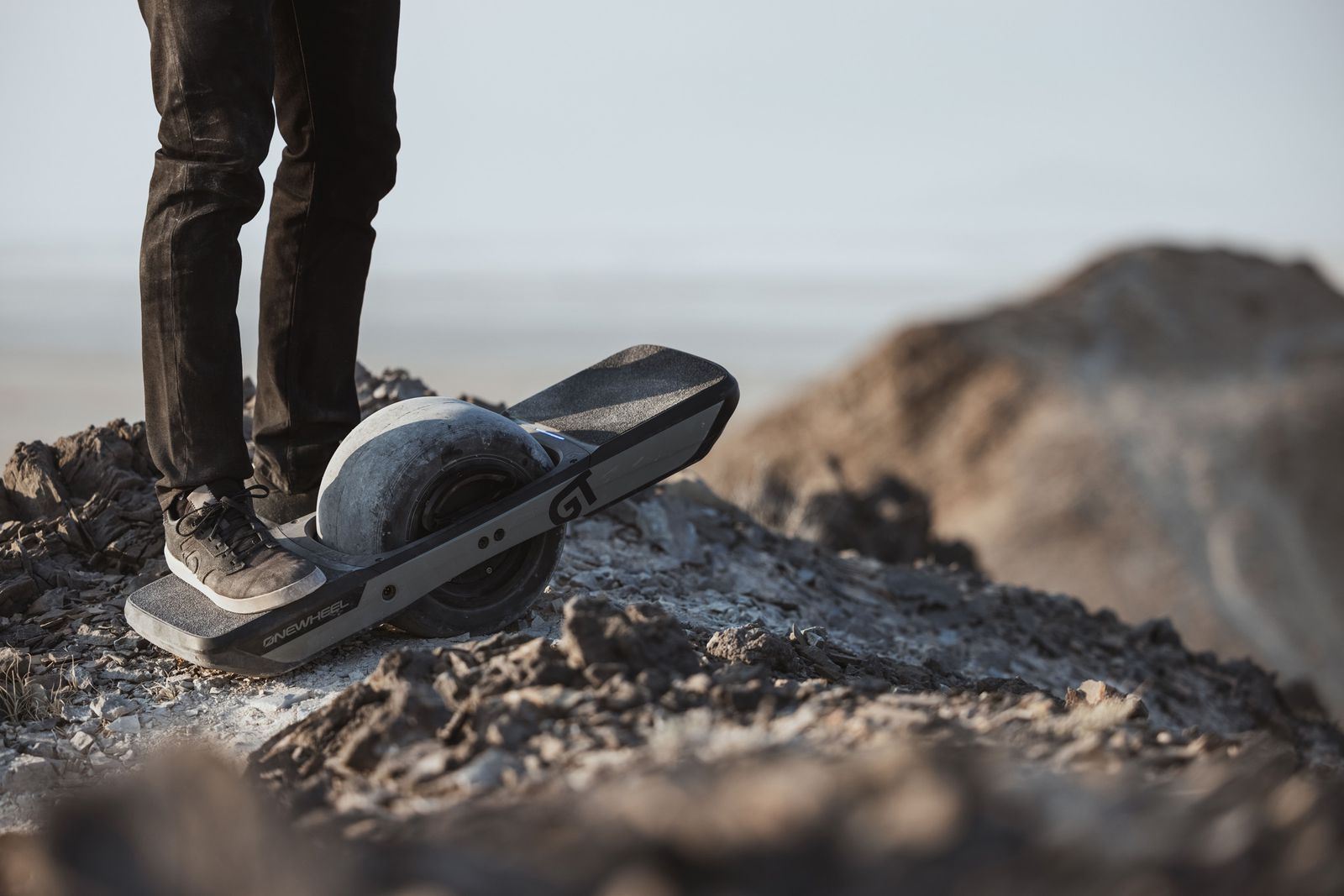
Onewheel GT
TOP SPEED: 20mph (30km/h)
MOTOR : 750W
BATTERY: NMC 21700, 525 WH
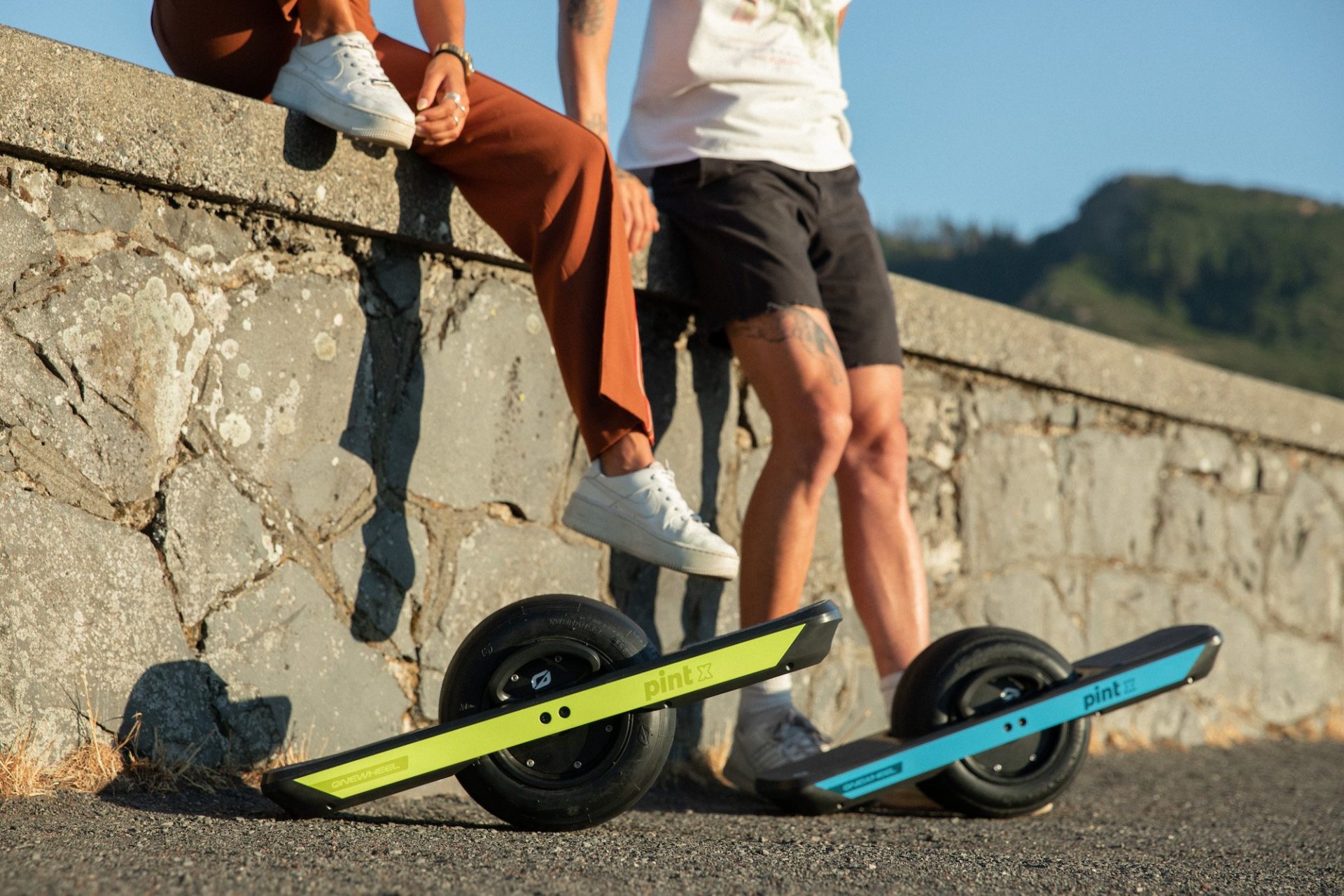
Onewheel Pint X
TOP SPEED: 18mph (30km/h)
MOTOR : 750W
BATTERY: NMC 21700, 324 WH
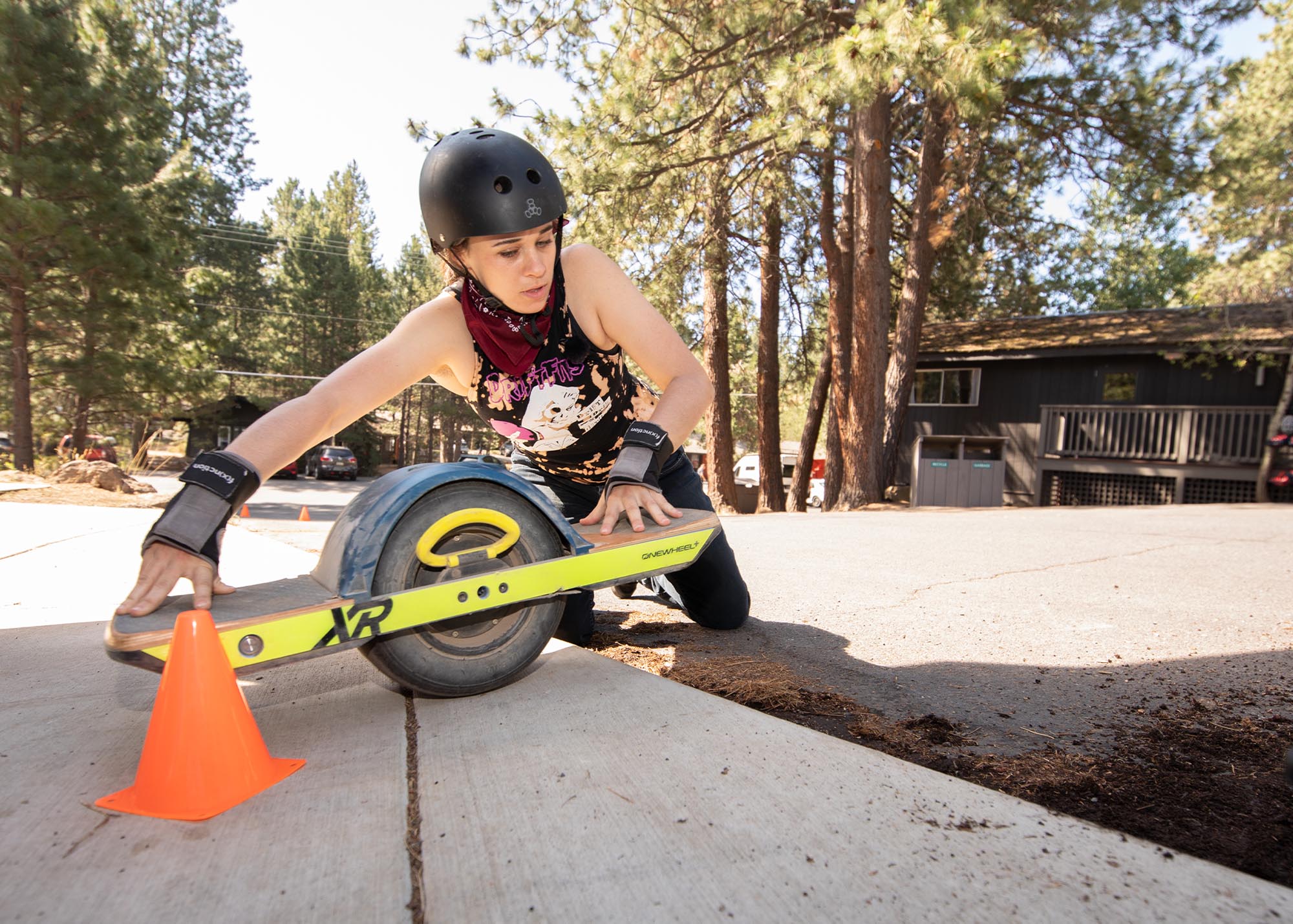
Onewheel XR
TOP SPEED: 19mph (30km/h)
MOTOR : 750W
BATTERY : NMC 18650, 324Wh
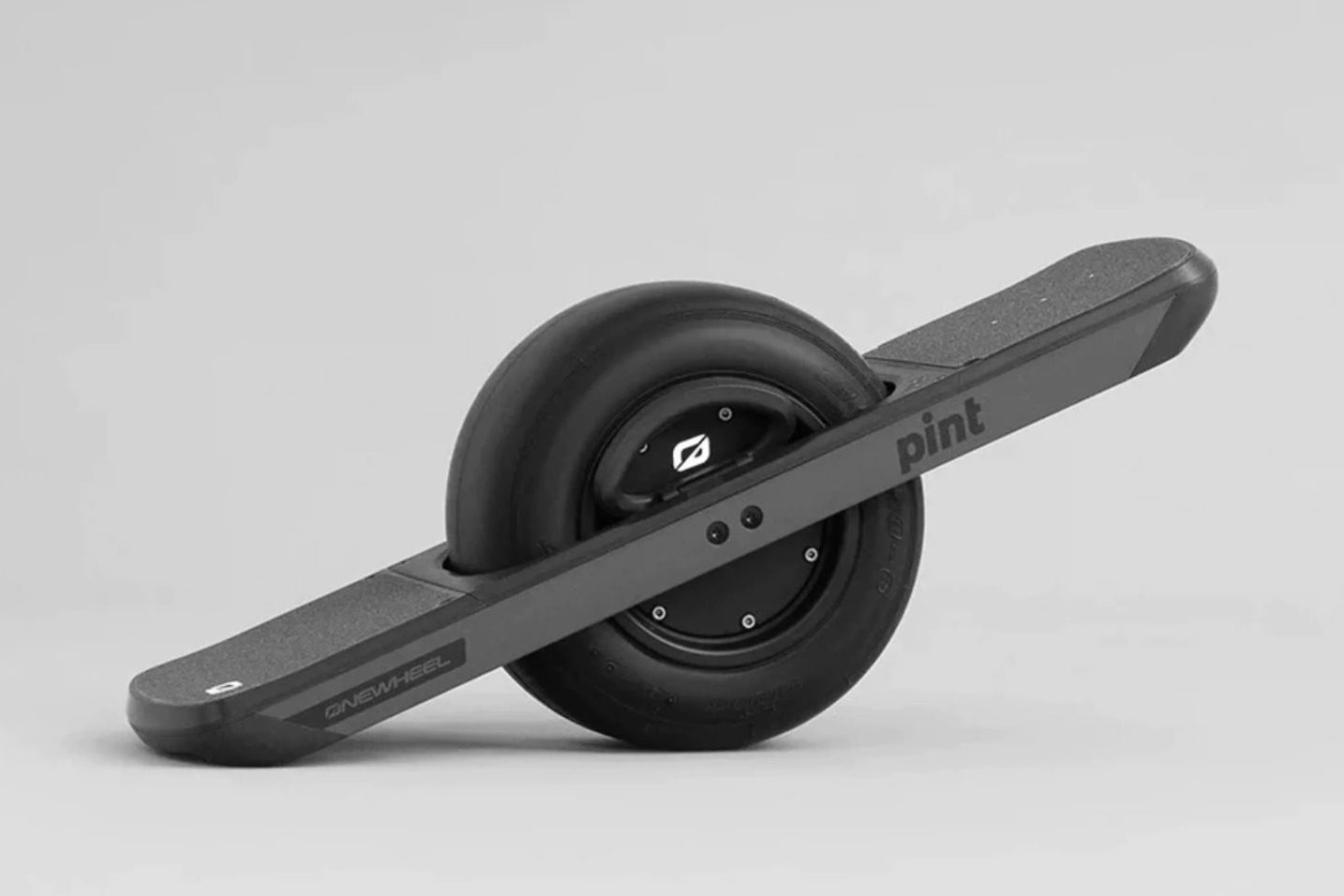
Onewheel Pint
TOP SPEED: 16mph (25km/h)
MOTOR : 750W
BATTERY: NMC 18650, 148Wh
FAQ
What is a Onewheel?
A Onewheel is an electric skateboard with one large wheel capable of excelling in singletrack trail conditions. It is a complex, sturdy, and expensive piece of equipment (the current model retails for $2,250.00). Riders have a very similar appearance to snowboarders as they descend singletrack. Riders stand sideways on their boards, leading with their shoulder, exactly like skateboarders and snowboarders.
How is it classified?
A Onewheel most closely resembles a “Class I” e-bike, meaning it is not meant to exceed speeds of around 20 mph and has no throttle. The board’s motor only engages when the rider actively pressures the board with their leading foot. Onewheels are vastly different from motor vehicles such as electric dirt bikes, which can damage terrain and put other trail users at risk with excessive speed capabilities.
Is it allowed?
In the absence of PEV-specific regulations, we believe that Onewheels belong anywhere bikes belong. Just like other trail users, riders exhibit a variety of skill levels and preferred speeds, so as long as they are riding safely and courteously, the Onewheel is not inherently more out of place. Where specific rules do exist to prohibit Onewheel use, IOWA expects riders to comply with posted signs, engage respectfully with park authorities, and leave the trail if asked.
Common Concerns
Myth:
Onewheels put other trail users at risk
Onewheels are more than capable of traveling in a safe and controlled manner on trails. The maximum speed of the fastest Future Motion Onewheel on the market is 20mph (30km/h). A Onewheel can come to a full and controlled stop when the rider leans back and steps off the sensor (front footpad).
In addition, riders wear safety equipment, practice trail etiquette, and sign liability waivers. They are no different in this regard than existing mountain bike users.
The director of Austin Ridge Riders Mountain Bike Club said: “OneWheel riders pose low trail erosion and user-conflict risks. OneWheel riders often ride slower and more carefully over tricky off-road terrain, due to the nature of the setup. With a single wheel to balance on, they tend to be attentive and careful and ready to step off the board when needed.”
Myth:
Onewheels damage trails
While any wheel, foot, or hoof can cause damage to a wet or muddy trail, the Onewheel is not worse than any other type of trail user. In fact, it’s the opposite: Onewheels can actually improve trails! The wide tire packs dirt and flattens ruts left by other users. We like to think of it as a “natural surface Zamboni.” Swipe through these before and after pics to see what we mean!
Myth:
Onewheels present a fire hazard
The sophisticated battery technology included in these premiere products is equivalent or better than e-bikes currently allowed on most trails. With a four-figure price point, it’s clear that the Onewheel is not just a cheap toy that has been thrown together for mass production without appropriate QC.
The Onewheel is not a “hoverboard.”
While thermal runaway is possible with any lithium ion battery, including the rechargeable batteries in cell phones that are carried by nearly every trail user, Future Motion has taken great care to ensure that its products present a minimal risk of ignition. The company sources only the highest quality NMC battery cells from reputable sources and subjects the Onewheel to rigorous QC testing.
The product bears CE conformity marks which can be viewed in the product owner’s manuals: GT, XR, Pint and Pint X
Benefits of Onewheel Inclusion
Accessibility
PEVs open up the realm of outdoor exploration to people who otherwise wouldn’t (or couldn’t) experience it. Some of these people may be unable to pedal a bike due to injury, illness, disability, or the inevitable process of aging. Others may simply find more enjoyment on one wheel than two, just as some prefer snowboarding to skiing. Those groups learned to share the mountain, and we can, too!
Health
Many Onewheel riders find mental health therapy and spiritual healing at “dirt church.” Whether it’s a simple daily boost of serotonin or recovery from depression and trauma, the act and community of Onewheeling support physical and mental wellness for the tens of thousands of riders who enjoy the sport today.
Tourism
Great trails attract Onewheel riders—and that’s a good thing! The annual Floatlife Fest attracted 500 guests in 2021. These individuals brought business to local food and lodging establishments and produced content that highlighted the destination, which would in turn generate additional tourism.



